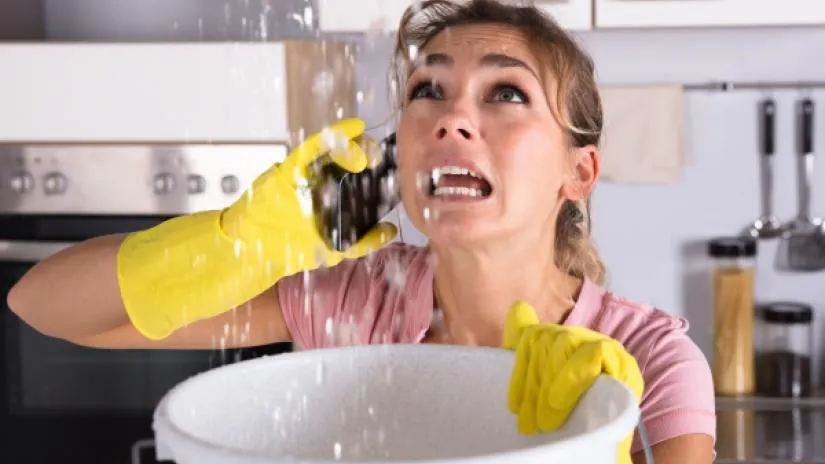
A leaking bathtub can cause significant damage if not addressed promptly. Rainbow Restoration highlights key steps to manage and resolve this issue.
|
If you notice a damp spot on your ceiling, it usually signifies a leak. Depending on your home, the source of the leak could be your roof or plumbing in one of the upstairs rooms.
Plumbing leaks often originate in bathrooms—and the chances are good that a water-damaged ceiling is the result of a leaky bathtub or pipe.
Read on to learn everything you need to know about addressing a bathroom or bathtub leak to prevent further damage to your home.
Related Topic: Discover Signs of Bathroom Water Damage
Determining the Cause of Your Bathroom Leak
The first step to addressing a leak is pinpointing its origin point. A bathtub leak is likely to blame when a downstairs ceiling is leaking from an upstairs bathroom. Bathtub leaks usually originate with the drain, the overflow drain, or a bathtub crack.
Once you’ve addressed the source of the damage, it’s critical that you 1) hire a licensed plumber and 2) engage in professional water damage restoration.
Everything You Need to Know About Bathtub Leaks
The three most common sources of bathtub leaks are:
- Bathtub Drain Leak: A leaky bathtub drain is a common cause of bathroom water damage. This type of leak occurs when the drain and attached lines beneath your tub may weaken, causing the seals to fail or cracks to form. This drip, even if slow, will result in water damage to the infrastructure below the tub area.
- Bathtub Overflow Drain Leak: Every tub is equipped with an overflow drain to preemptively stop a tub from overflowing into your bathroom. Unfortunately, as tubs age, this overflow drain may crack, break, or leak. Most likely it is the drain gasket. Like a drain leak, a bathtub overflow drain that is leaking may cause damage to your home.
- Bathtub Crack Leak: Perhaps the leak isn’t from the pipes at all. Bathtub leaks can be from discrete hairline fractures in the body of the tub itself. This type of leak can be easily missed. To determine if a crack in the bathtub is the source of your leak, fill the tub with water. Allow the water to be still and look for areas that pull the water. Those small currents are flowing to your bathtub crack.
Related Topic: How Much Can a Leak Add to Your Monthly Water Bill?
Bathtub Leak Repair
The first step in restoring your bathroom is to stop the leak. The type of leak will dictate the approach:
- Broken drain seal or overflow drain leak: Broken seals should always be addressed by a plumbing professional. This process may require the replacement of plumbing components and the creation of a waterproof seal.
- Tub cracks: Whether it’s a visible crack or just a hairline fracture, a qualified repair person can use two-part epoxy to fill and seal any cracks in the tub.
After the leak is located and repaired by a licensed plumber, the second component of your restoration is to remediate the existing water damage.
Professional water damage restoration will dry your ceiling and drywall, remediate mold, and return your bathroom to its pre-damage state.
Choose Professional Mold and Water Damage Restoration
A leak can lead to more than just a discolored and damaged ceiling. Water damage may also result in mold, creating a serious health hazard in your home. If your home has suffered water damage and you're not sure what to do, call the local pros at Rainbow Restoration for help. Our IICRC-certified service professionals are backed by the Neighborly Done Right Promise and can help return your home to its pre-damage condition. To learn more, give us a call or request an estimate online today.
